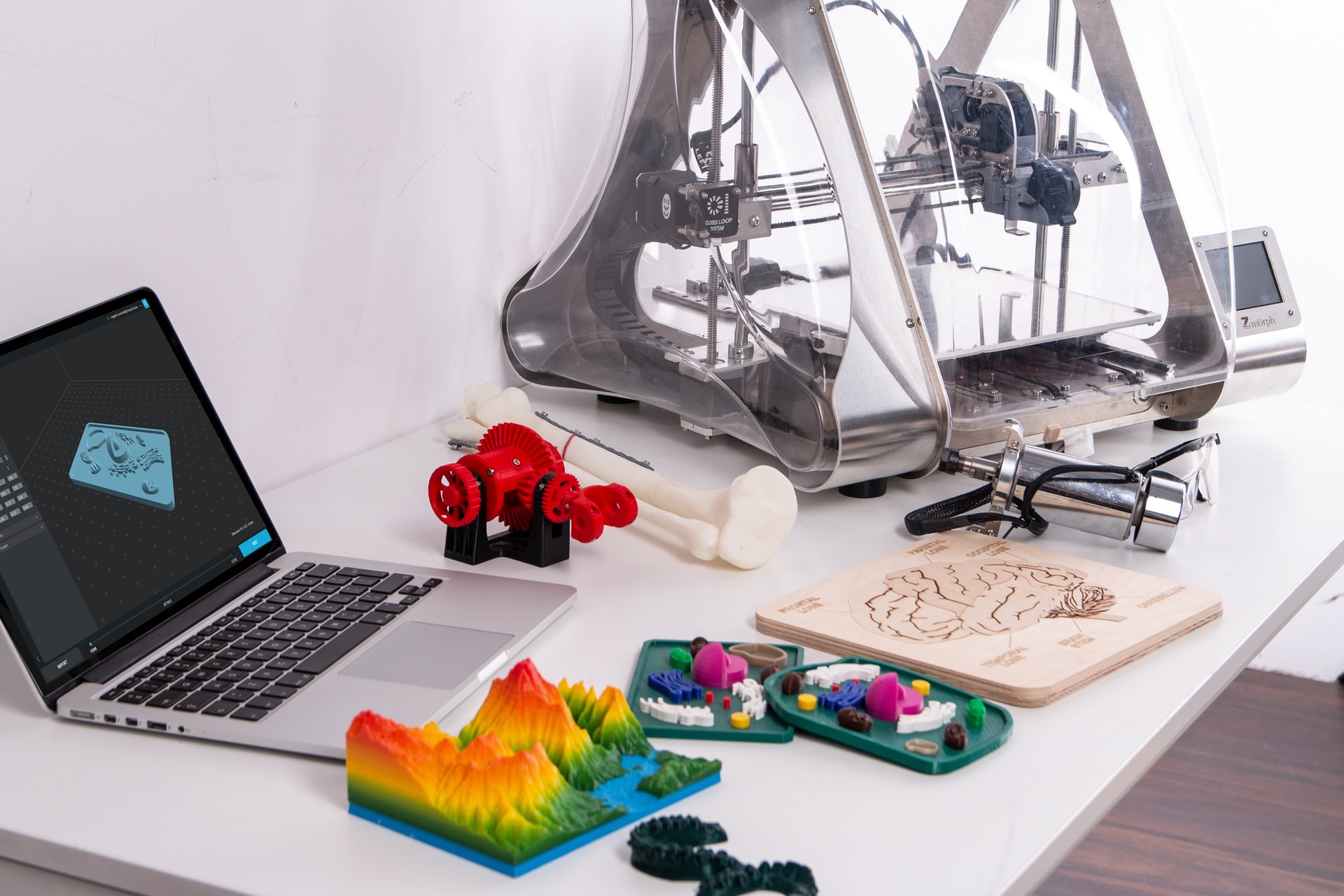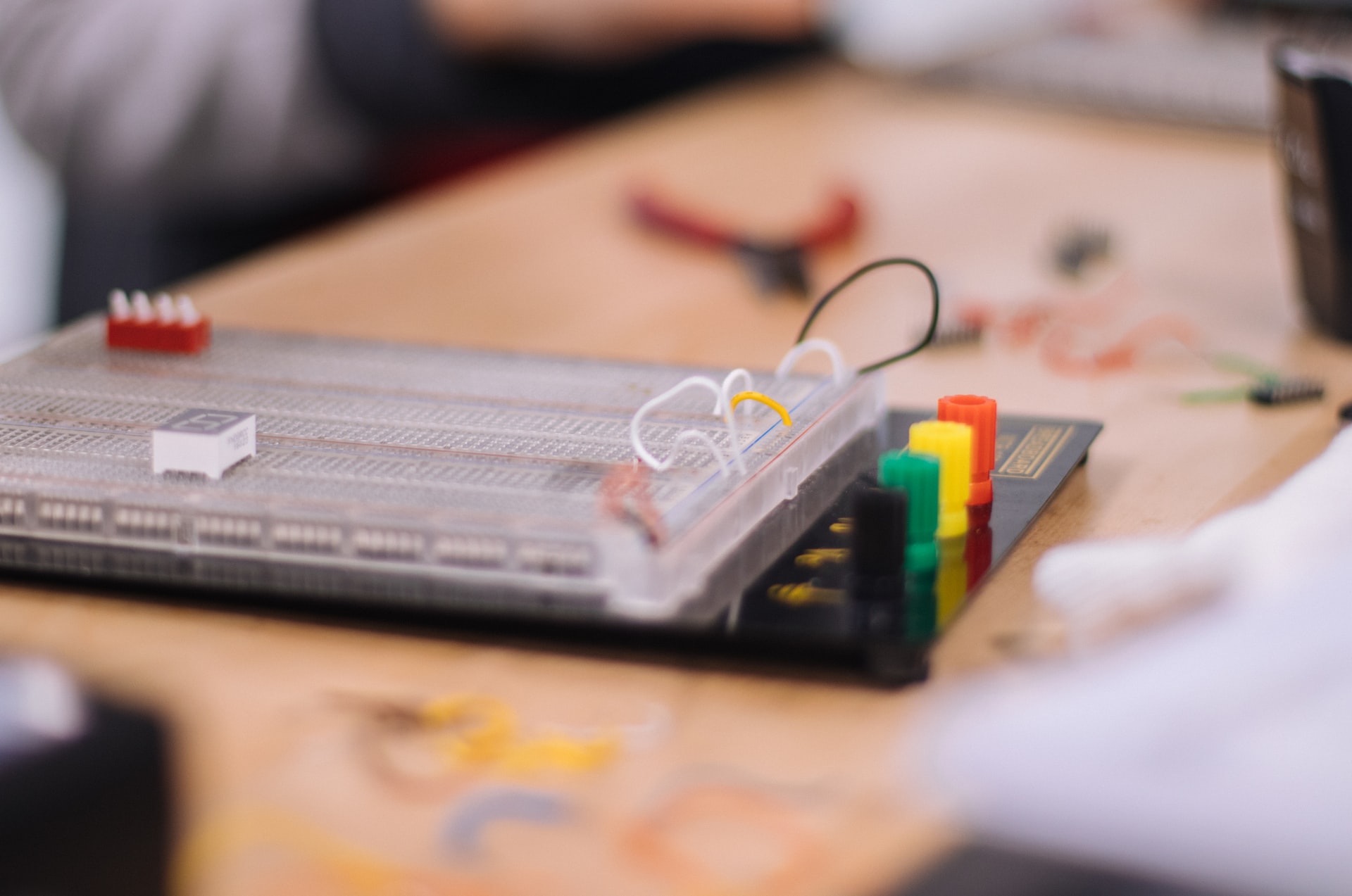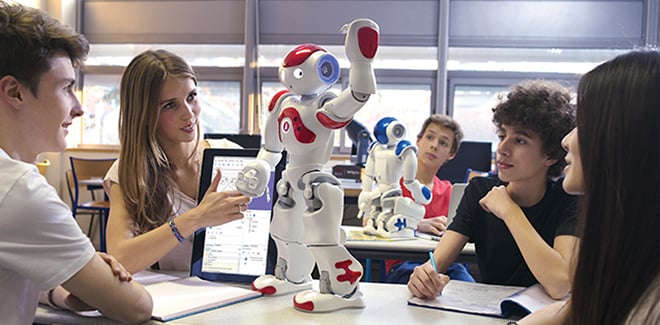3 Ways to Build Better Edtech Processes for Teaching and Learning
By Maxwell Witt
 Photo by jose aljovin on Unsplash
Photo by jose aljovin on Unsplash
Burnout in the education system highlights the importance of technology integration to improve edtech processes.
- 0 Comments
- Aug 18, 2021 10:00:00 AM
- Posted by Maria Alejandra Calcetero
- Topics: Robotics, STEM, Education, Curriculum, Robots,, Learning, Innovation, Makerspace, Educators, teaching, distance learning, Automation, Online Learning, Educational Robots, schools
Two Ways Using Educational Robotics In Schools Saves Teachers Time For Creative Work
By Amanda Dudley
 Photo by Fitore Fazliu on Unsplash
Photo by Fitore Fazliu on Unsplash
As a teacher, what would you give to have a few extra hours in your workweek for yourself? A few extra hours during which you can put your feet up and complete that novel you've been working on for months.
This sounds like a dream that may never come true unless you discover a magical lamp with a genie trapped inside it. Nevertheless, thanks to technology, this dream is gradually coming to life.
In today's world, educational robots are a phenomenon that's rapidly infiltrating the educational system. More and more teachers are integrating robotics into STEM classes and even art lessons, making the learning process more seamless and fun.
However, this educational revolution offers other benefits for overworked teachers. Recent studies have shown that robotics in education can help teachers save time, and we'll show you how in a bit.
- 0 Comments
- Aug 17, 2021 10:00:00 AM
- Posted by Maria Alejandra Calcetero
- Topics: Robotics, STEM, Education, Curriculum, Robots,, Learning, Innovation, Makerspace, Educators, teaching, distance learning, Automation, Online Learning, Educational Robots, schools
How to Teach 3D Printing in Distance-Learning Classrooms
 Photo by ZMorph All-in-One 3D Printers on Unsplash
Photo by ZMorph All-in-One 3D Printers on Unsplash
As 3D printing technology continues to develop, it’s no surprise that more educational institutions are teaching students how to use it to their advantage.
3D printing is found in various career fields, so introducing children to it at a young age can help them identify what they’d be interested in doing as they grow older. Educators must be trained and informed about this technology to pass their knowledge on to generations that will eventually make up the workforce.
As the pandemic continues to impact all facets of our lives, some K-12 schools are adopting hybrid learning models — where students participate both in-person and online. Many educators had to learn new technologies to accommodate this change and adapt to new learning platforms.
3D printing is a growing technology with various applications that will likely become commonplace in educational institutions. One of its significant benefits is the ability to create models using remote software.
For example, if a student creates a model on their home computer, it can be sent to the school for the final printing phase. Teachers can then provide feedback in-person, through email, or on a learning platform, like Moodle or Blackboard.
You may be wondering how to teach students about 3D printing outside the classroom. Here are some alternative methods and how you can assist students with this new academic topic.
- 1 Comments
- Aug 13, 2021 10:00:00 AM
- Posted by Natalia Galvis
- Topics: Robotics, STEM, Curriculum, Learning, Innovation, Makerspace, 3D-Printer, teaching, distance learning, Online Learning, 3D printing
STEAM & EdTech: The Perfect Match for Cross-Curricular Classroom Activities
 Photo by Jeswin Thomas on Unsplash
Photo by Jeswin Thomas on Unsplash
STEAM learning is arguably the most effective approach to prepare young students for the demands of the future. It represents a turning point in education because it creates a bridge between subjects that were traditionally studied separately, and EdTech is the perfect enabler to project cross-curricular classroom activities.
Creativity, innovation, leadership, critical thinking, problem-solving are only a few of the key soft skills that STEAM can foster.
- 0 Comments
- Aug 10, 2021 10:00:00 AM
- Posted by Natalia Galvis
- Topics: Robotics, Local News, STEM, Curriculum, Robots,, partnership, Softbank Robotics
RobotLAB is SoftBank's Master Distributor of Pepper and NAO robots in the USA/Canada
In our continuous efforts to keep you informed about the progress of SoftBank Robotics restructuring, we would like to provide you with the latest information.
As some articles are potentially creating confusion for you, we would like to share with you facts to clarify the situation and the future of our robots.
- 0 Comments
- Aug 5, 2021 1:26:42 PM
- Posted by Natalia Galvis
- Topics: Robotics, Local News, STEM, Curriculum, Robots,, partnership, Softbank Robotics
How Hidden Classroom Dynamics Can Stymie Girls in STEM
By Youki Terada
If we want to close the gender gap in science, we need to look at the invisible forces that shape classroom culture.
- 0 Comments
- Jun 29, 2021 10:00:00 AM
- Posted by Natalia Galvis
- Topics: Robotics, EdTech, STEM, Computer Science, Problem Based Learning (PBL), teachers, Coding, Robots,, students, STEMchat, Edchat, Digital Technology, teaching, online
4 Steps to Maximize Summer Learning
 Photo by Start Digital on Unsplash
Photo by Start Digital on Unsplash
Summer learning will play a critical role in students' return to full-time in-person learning this fall.
- 0 Comments
- Jun 25, 2021 10:00:00 AM
- Posted by Natalia Galvis
- Topics: Robotics, EdTech, STEM, Computer Science, Problem Based Learning (PBL), teachers, Coding, Robots,, students, STEMchat, Edchat, Digital Technology, teaching, online
Turn To Coding And Robotics If You Want Your Students To Posses a Growth Mindset

Diligence, a curious spirit, and perseverance are qualities we desire to see in our students. These traits are elements of the “growth mindset.” Teaching students coding presents one of the best opportunities to develop and nurture kids’ growth mindset in the school setting. This article shows five scenarios to support this position.
- 0 Comments
- Jun 24, 2021 10:00:00 AM
- Posted by Natalia Galvis
- Topics: Robotics, EdTech, STEM, Computer Science, Problem Based Learning (PBL), teachers, Coding, Robots,, students, STEMchat, Edchat, Digital Technology, teaching, online
Setting Students Up for Careers in Computer Science
By Dan Matthews
 Image Source: Pexels
Image Source: Pexels
Discussing careers with students can be challenging. After all, a lot of weight is often placed upon the subject. As a teacher, you're expected to provide insights into potential careers that empower students to thrive beyond school.
In this regard, computer science can be a great area of discussion and exploration. It has increasing relevance in the current digital landscape. There is also a growing number of professions it can be applied to. These factors, among others, can make it an important consideration. Indeed, it is part of the reason that it is imperative to teach computer science in schools. Yet, it has something of a dry reputation. Students who may not be inclined toward the science, technology, engineering, and math (STEM) subjects run the risk of missing out on careers that enrich their adult lives.
So, how can you best go about setting students up for careers in computer science? Let’s take a closer look at some areas of consideration.
- 0 Comments
- Jun 23, 2021 10:00:00 AM
- Posted by Natalia Galvis
- Topics: Robotics, EdTech, STEM, Computer Science, Problem Based Learning (PBL), teachers, Coding, Robots,, students, STEMchat, Edchat, Digital Technology, teaching, online
3 reasons virtual STEM is here to stay
By Alan Downward, Ph.D., Science Team, Flinn Scientific

Virtual STEM offers engaging learning opportunities for students—opportunities that have proved essential during COVID.
- 0 Comments
- Jun 22, 2021 10:00:00 AM
- Posted by Natalia Galvis
- Topics: Robotics, EdTech, STEM, Problem Based Learning (PBL), teachers, Robots,, students, STEMchat, Edchat, Digital Technology, teaching, online
Relevant Posts
Popular Posts
Subscribe to Email Updates
-
I Want To Learn MoreADDITIONAL INFORMATION



